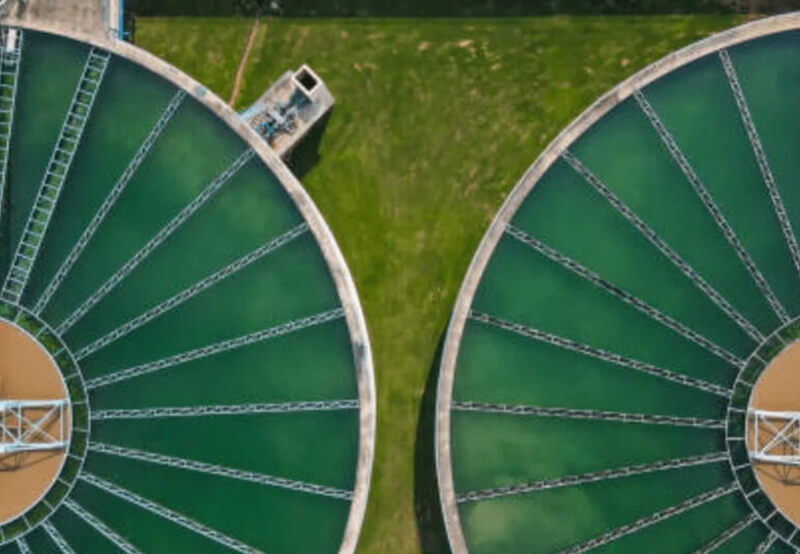Introduction
The functional role of Effluent Treatment Plants (ETPs) is very essential in controlling and treating the industrial wastewater and making sure that the contaminants that are harmful to the environment are eliminated before the water is released into the environment. With the rapid expansion of industries worldwide, the need for efficient industrial wastewater treatment has become more crucial than ever. By treating effluents properly, not only industries can manage to adhere to the environmental regulations, but it can also take part in sustainable management of water and control of pollution.

Water is a very essential resource and its pollution as a result of industries is a very dangerous matter to the ecological and human well-being. The production of waste water is high in such industries like textile, chemical, pharmaceutical industries, food processing industries, and power generation industries owing to the use of organic and inorganic pollutants. Without an effective effluent treatment system, these pollutants can lead to severe environmental damage, harming aquatic life and making water sources unfit for consumption.
This blog explores the effluent treatment solutions, highlighting their role in maintaining environmental balance and ensuring sustainable industrial growth. We will delve into the wastewater treatment process, discussing the latest ETP technology that industries are adopting to meet regulatory standards and reduce their ecological footprint.
What is an Effluent Treatment Plant (ETP)?
An Effluent Treatment Plant (ETP) is a facility that treats industrial wastewater by removing the contaminants from it. It involves several stages that physically, chemically, and biologically treat the wastewater so that the water discharged is harmless to the environment. The treatment plants are different based on the industry and the kind of effluents they generate.
Importance of Effluent Treatment Plants
1. Compliance with Environmental Regulations
The world governments and other environmental agencies like the EPA and many others have strict policies on the discharging of waste water. An effective effluent treatment system helps industries comply with these regulations, avoiding legal penalties and maintaining their operational licenses.
2. Reduction of Water Pollution
Industrial wastewater may be contaminated with such dangerous chemicals, heavy metals, and toxic compounds that pollute water bodies and without treatment. Effluent treatment technologies eliminate these pollutants and block the chances of pollution and protection of aquatic life.
3. Resource Conservation and Sustainability
Many ETPs incorporate advanced ETP technology that enables the reuse and recycling of treated water. This reduces freshwater consumption, promoting sustainable industrial operations and water conservation.
4. Protection of Public Health
Polluted water sources can lead to severe health problems, ranging from waterborne diseases. Through the use of a proper wastewater treatment process, industries can be certain that their effluents are not harmful to nearby communities.
5. Improved Industrial Efficiency
Conservation of wastewater enhances efficiency in the functioning of the system by minimising losses, and at a lower cost of treating the wastewater. Pollution control is getting more sophisticated with effluent treatment solutions that are also worth recovering byproducts that are of value to industries.
How Does the Wastewater Treatment Process Work?
The wastewater treatment process in an ETP typically involves four main stages:
1. Preliminary Treatment
Large solids, debris, oil, and grease are eliminated from the wastewater at this stage. Before undergoing additional treatment, these impurities are frequently removed using screens, grit chambers, and oil separators.
2. Primary Treatment
To remove suspended solids from wastewater, primary treatment uses coagulation and sedimentation techniques. Particles may settle more quickly with the use of chemical additives, which facilitates their removal.
3. Secondary Treatment
In this stage, organic matter in wastewater is broken down by microorganisms as part of a biological treatment process. Cleaner effluent is ensured by aeration tanks, activated sludge processes, and biofilters, which help lower chemical and biological oxygen demands (COD and BOD).
4. Tertiary Treatment
Advanced filtration and disinfection procedures are used in the last step to get rid of any last contaminants. Reverse osmosis, UV disinfection, and activated carbon filters are some techniques that improve the quality of treated water, allowing for safe discharge or reuse.
Conclusion
Effluent Treatment Plants are an inevitable component of the industrial processes since it guarantees the fact that, through it, wastewater is managed responsibly and the environment is taken care of. By implementing advanced ETP technology and following a structured wastewater treatment process, industries can reduce pollution, comply with regulations, and contribute to a sustainable future. Efficient effluent treatment solutions have twofold benefits: the positive effect on the environment and the overall improvement of the operational process and corporate responsibility.
In the current environmentally conscious world where regulations are increasingly becoming strict, industries should seek to treat their industrial wastewater in order to reduce the effects of their activities. An optimally functioning effluent treatment system holds the key to balancing industrial growth with sustainability in the environment.
Frequently Asked Questions (FAQs)
ETPs help industries comply with environmental laws, reduce pollution, and promote sustainable water usage by treating wastewater before its release.
Industries such as textiles, pharmaceuticals, food processing, chemicals, and power plants generate wastewater that needs treatment to prevent environmental contamination.
ETPs use physical, chemical, and biological processes, including sedimentation, coagulation, aeration, filtration, and disinfection, to treat wastewater effectively.
Many ETPs integrate recycling systems that allow industries to reuse treated water, reducing dependency on freshwater sources and lowering environmental impact.
Untreated wastewater can lead to environmental pollution, legal penalties for industries, damage to aquatic ecosystems, and serious health risks to communities.












